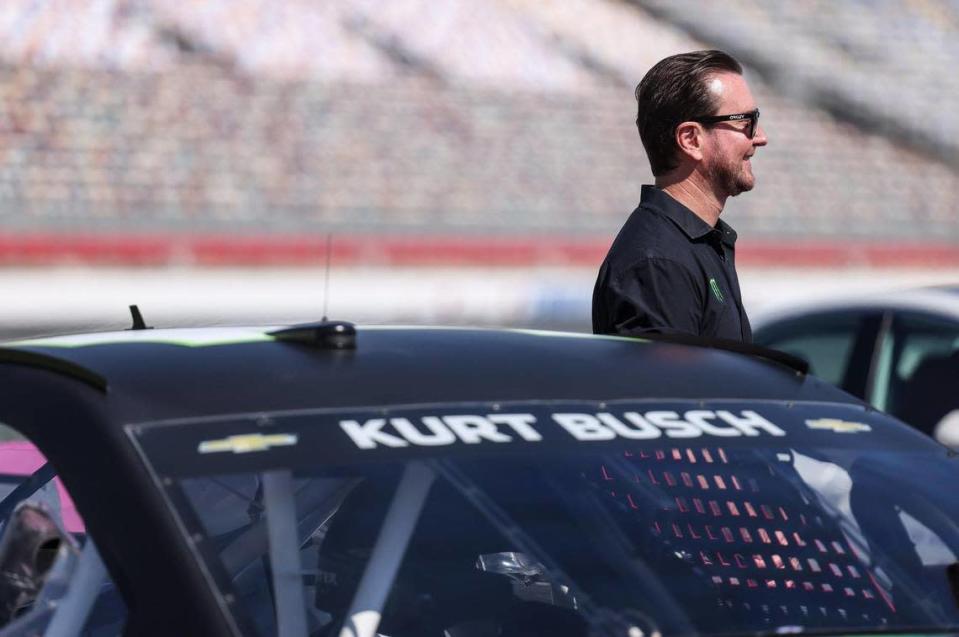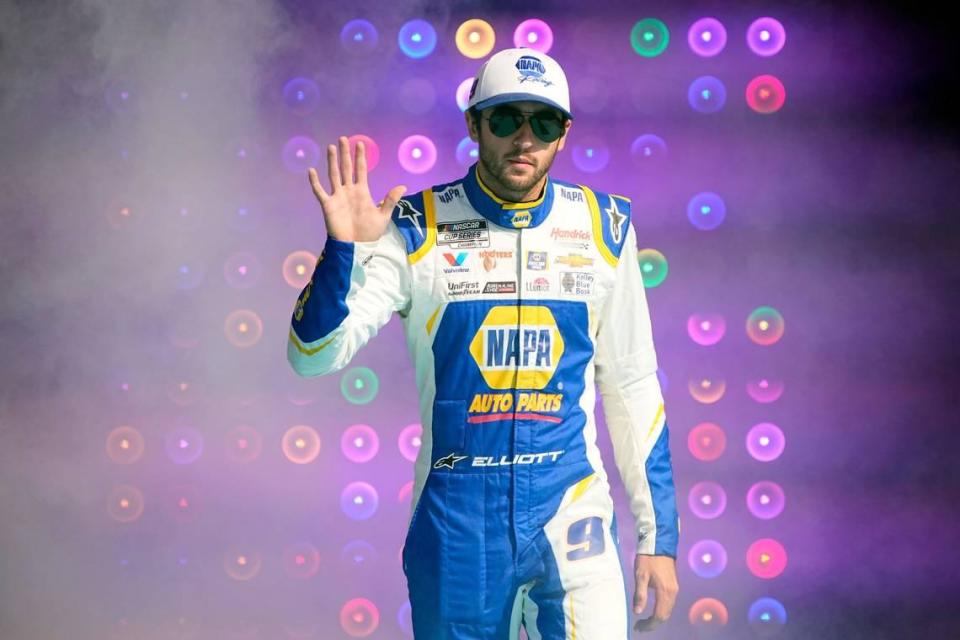NASCAR officials met with Cup Series drivers for a “tense” and “candid” driver-initiated meeting at Charlotte Motor Speedway on Saturday morning, with the goal of making the Next Gen car safer.
The meeting, which lasted more than an hour, included NASCAR President Steve Phelps, who told drivers that changes to the car will be implemented for next year.
Among those changes include adjustments to the rear bumper structure, as well as adjustments to the car’s rear clip center section.
“It was good conversation, I think,” Kyle Larson told reporters after Cup qualifying on Saturday. “Everybody getting to voice their frustrations and stuff, and I think NASCAR knew the frustrations and concerns before we ever had the meeting, but I think it was well-received and good for them to listen to.”
The meeting happened a week after drivers — particularly veterans Denny Hamlin and Kevin Harvick — called out NASCAR for the toll the Next Gen car takes out on the driver, particularly when a collision occurs from the rear.


Kurt Busch, who wrecked at Pocono in July, is still out of racing with a brain injury. (He was wearing a headset on pit road on Saturday.) And Alex Bowman will miss his second straight race with a concussion. Both drivers had contact to their rear bumpers after getting loose and knocking into the wall.
“The frustrating part is that it took way too long to have that meeting,” Joey Logano said. “That meeting should’ve happened Monday after Kurt’s crash, not waiting until Alex had his crash. And at least hear us out. I’m not saying they weren’t working on it after Kurt’s crash, but the communication in person is so important.”
Christopher Bell told reporters that there wasn’t a ton of data presented, but that the groups got occupied with “open conversation” that took up a majority of the time. He added that “the screen that they showed us, they have made improvements with the rear impacts.”
Chase Elliott told reporters that he didn’t exit Saturday’s meeting with any changed opinions — but he left with the feeling that NASCAR understood where the drivers were coming from, which was also valuable.
“I think they get it,” Elliott said of NASCAR. “I think they understand. They have been super up front with what they’re working on and trying to help, and I feel better about that. I wish we would’ve had maybe a talk like that a little sooner, but hey look, we had it, I appreciate it, I think it’s good, there’s a direction, so let’s make it better.”


Hamlin and Harvick have led the discussion on car safety this summer. Harvick’s car caught on fire seemingly out of nowhere in Darlington, and said that the reason why in a post-race interview was because of “crappy-ass parts.”
Last week, Hamlin went further: “It needs to be redesigned everywhere — front, middle, rear, competition, the whole thing needs to be redesigned.”
Earlier this summer, some of the less-tenured drivers deferred to the veterans to speak out on issues of safety. Now, at the behest of those veteran drivers, they’re speaking out, too.
One of those guys is Chase Briscoe.
“For me, I haven’t really had a lot of first-hand experience luckily with this crash, especially the rear-impact stuff,” Briscoe told reporters. “So you know I probably haven’t been as outspoken as other guys. But yeah, absolutely, the (car) needs to be as safe as it could possibly be. There’s no reason it shouldn’t be.”
He added: “With the old car, you felt invincible, right? You could make these huge crashes and you’d get out and you’d be OK. And with this car you haven’t had this same feeling.”
The changes discussed Saturday would all be for next year. Drivers said that there wasn’t a ton of conversation about changes that would be effective immediately.
“I think they kinda went through all that, and I think a lot of times we try to blame it on communication,” Hamlin said. “But ultimately, you really gotta have the infrastructure within your company to make changes quickly. When we talk about cutting costs and stuff.
“That’s maybe something they can look at in the future: How do they get bigger and better and more efficient to make changes when we need them?”
